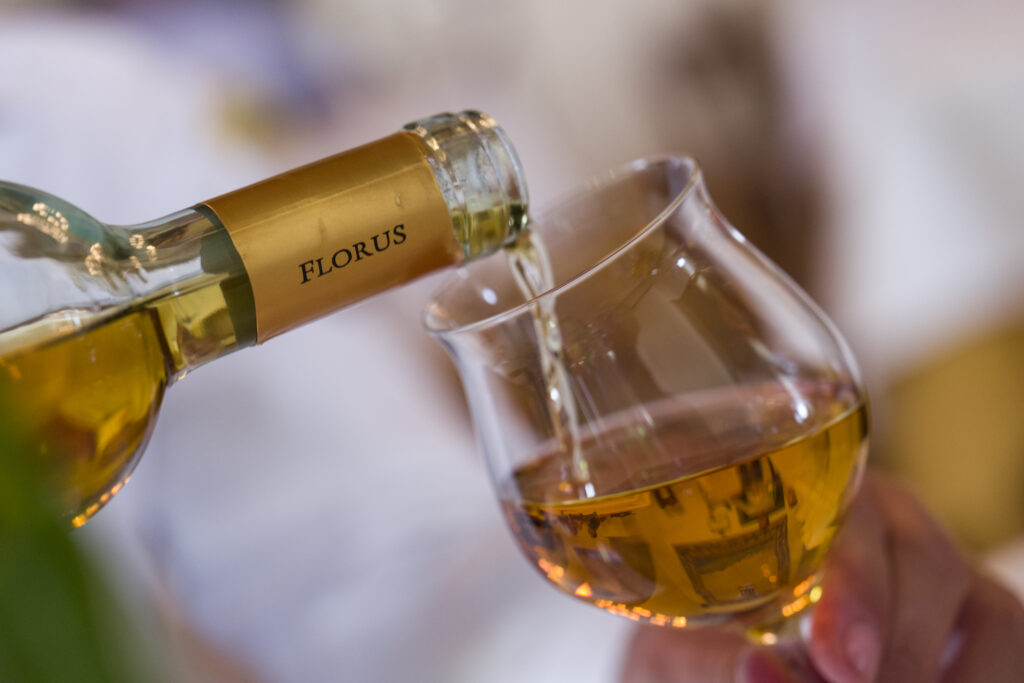It is important to know that you don't have to be a professional sommelier to know how to make a tasting experiences of wines: just follow some tips on wine tasting.
Practical tips for tasting wine
The first tip for tasting wine is to do not compromise your senses before tasting. This means avoiding eating heavy foods, chewing gum or smoking, but also not using perfumes or creams with too strong a fragrance, as they may alter olfactory perceptions.
The second suggestion is to always start with the lightest wines and continue with gradually more full-bodied and structured ones.
The third piece of advice is to do not touch the chalice with your handsHold the glass by the stem to prevent the heat of your hand from affecting the temperature of the wine.
Tasting wine: a multi-sensory experience
Tasting a wine is a complete experience from a multi-sensory point of view because, as we have seen, it involves most of the senses: sight, smell and palate.
The view
The first sense involved in a wine tasting is the viewFrom its appearance one can already understand many of its organoleptic properties, which can be confirmed or not during the subsequent stages of tasting. The characteristics to bear in mind during the visual examination are:
- colour
- clarity
- consistency
- effervescence
Colour: white, red or rosé? And what are the intensity and hue? The variety of the grape variety, the vinification process, the age of the wine and the production area are just some of the factors that influence this.
The second phase is the evaluation of the clarity and transparency, i.e. the ability or otherwise of light to shine through and the possible presence of impurities or residues. To do this, it is necessary to tilt the goblet 45° against a white background with good lighting.
Then there is the consistency of wine, linked to the content of substances other than water and responsible for its organoleptic profile. To examine it, it is necessary to swirl the wine in the glass to assess its fluidity, the first of the reasons for the well-known gesture that has become the symbol par excellence of wine tasting.
One can observe droplets of wine running down the walls (in Italian this is referred to as 'bows"(French for 'tears'). Full-bodied, heavy, well-structured wines will go down more slowly, while lighter wines, particularly white wines, will go down faster.
Effervescence is probably the first thing we observe in sparkling or semi-sparkling wines. It is the development of bubbles, the perlage, which forms after opening a bottle, a consequence of the release of carbon dioxide, which dissolves and releases the gas, whose bubbles create the typical froth of these wines.
The sense of smell
Once you have passed the visual examination, you move on to the olfactoryThis is perhaps the most important part, but also the most difficult: it takes a lot of practice to be able to grasp all the olfactory notes. All wines have aromas that can be traced back to more than 200 different types of substances present in even minute quantities in the wine, the combination of which produces an aromatic bouquet that differs from wine to wine, but also, depending on storage conditions, from bottle to bottle.
The smell of corkis perhaps recognisable even to the inexperienced, whereas it can take several attempts to identify the countless fragrances that constitute the aroma of a wine.
Our practical advice on how to taste wine with the nose is to proceed in two three stages:
- at first,bring the rim of the goblet to your nose, inhale deeply and then move the glass away, trying to identify the most characteristic scent;
- subsequently, swirl the glass;
- at this point, bring your glass closer to your nose and sniff again to pick up the different notes.
Taste
Wine tasting is the last step in tasting and consists mainly of evaluating the taste sensations that are perceived during the wine's stay in the oral cavity. The different substances present in the wine interact with the taste buds of the tongue producing stimuli that are then passed in the form of nerve impulses to the brain. In addition, the gums and oral cavity are subject to 'tactile' stimuli that in turn produce sensations, which are then sent to the brain in the form of impulses.
How do we proceed?
The sip must be discreet and be done by trying to swallow as little air as possible. Taste the wine with your whole palate, not just your tongue, making sure to distinguish, in addition to the flavour of course, the consistency and viscosity, and hold it in your mouth for as long as you need. Wait a few seconds to make sure of the aftertaste.
If you want to put our tips on wine tastingour wine cellar is happy to host you for various tasting tours in the company of professional sommeliers.


